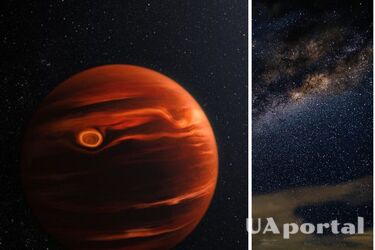Astronomers have found the oldest giant world with two suns just 70 light-years from Earth

Astronomers have found one of the oldest space worlds, which is 70 light-years from Earth. It reaches 20 Jupiter masses, has a temperature that can quickly melt aluminum, and has a 10,000-year orbit around not one but two stars. However, it is devastated by a constant powerful sandstorm.
According to ScienceAlert, astronomers have used the James Webb Space Telescope to obtain the most accurate observations of a planetary mass object, revealing wavering clouds of silicate grains circulating in the world's atmosphere called VHS 1256 b.
The results of the scientists' discovery were published in The Astrophysical Journal Letters. It is noted that the team of astronomers identified many components of the atmosphere of VHS 1256 b. These include unambiguous detections of methane, carbon monoxide and water with additional evidence of carbon dioxide.
"No other telescope has identified so many characteristics simultaneously for a single target. We see many molecules in the same spectrum from JWST that describe in detail the dynamic clouds and weather systems of the planet," commented astrophysicist Paul Mollière of the Max Planck Institute for Astronomy in Germany.
According to him, VHS 1256 b is somewhat of a mystery: "The mass straddles the boundary between giant planets and brown dwarfs, 'loser stars' that are not massive enough to fuse hydrogen but can fuse a heavier isotope of hydrogen, deuterium, in their cores, which has a lower fusion temperature and pressure than hydrogen."
The scientists note that the wide orbital distance of VHS 1256 b from the two suns indicates that it was formed as a result of a cloud collapse, but this is not a diagnosis.
"Theoretically, planets can also form from a cloud collapse model; the estimated minimum mass of a cloud collapse object is equal to one Jupiter. Thus, the boundary between the planet and the brown dwarf is the deuterium-burning mass limit, which means that the exact nature of VHS 1256 b is unknown. But it is precisely this great distance that allowed such impressive observations," the report says.
Astronomer Brittany Miles of the University of Arizona, who led the international research team, commented on the discovery: "VHS 1256 b is about four times farther from its stars than Pluto is from our Sun, making it an excellent target for Webb. This means that the planet's light does not mix with that of its stars."
We will remind, astronomers were able to detect a radio signal from a distant galaxy, at a distance of 8.8 billion light years from Earth. It may be related to an alien civilization.
If you want to receive the latest news about the war and events in Ukraine, subscribe to our Telegram channel!
